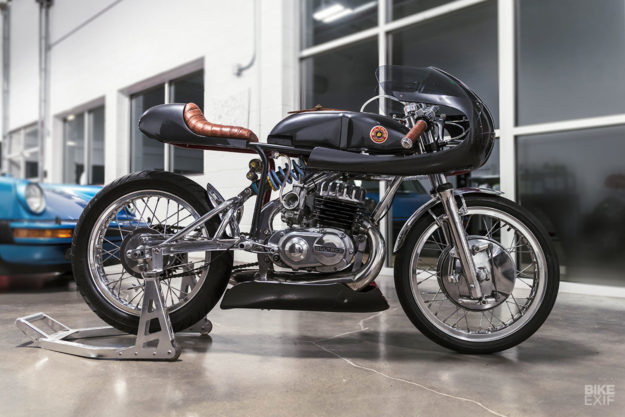
We like to think our tastes are eclectic. Whether it’s an oddity out of the left field, or a classy retro race machine, as long as it’s well designed and well built, it ticks our boxes.
Mark ‘Makr’ Atkinson has played at both ends of the spectrum. His BMW concept with designer Mehmet Doruk Erdem broke the internet last year. Now he’s hit back with something completely different: a schizophrenic Bultaco Alpina-based racer, painted in contrasting colors on each side.
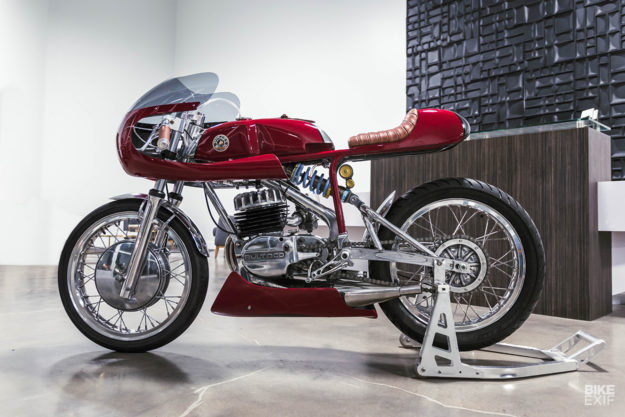
Based in Utah, Mark is a machinist by day—able to run old school manual machines and program the latest multi-axis contraptions. He spends his down time building bikes and competing in land speed racing.
He once told us he typically builds a new race engine each winter—from scratch, starting with a big billet of solid aluminum. He didn’t quite have to go to that extreme on the Bultaco, but he still had his work cut out.
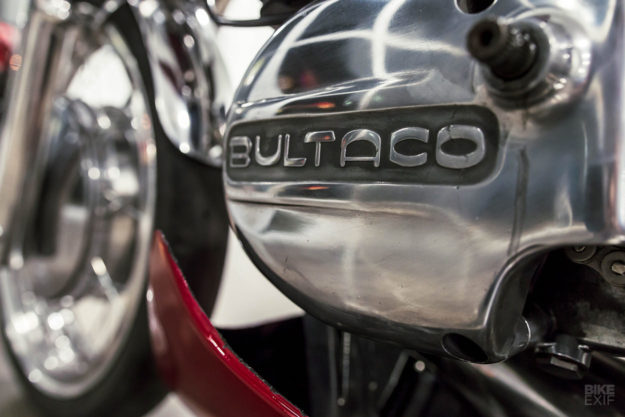
Stylistically, this project screams ‘classic road racer.’ But it actually started life as an old scrambler—a 1975 Alpina 350.
“Even though I have exercised my competitive edge in land speed racing, I mostly love going around corners on motorcycles,” Mark tells us. “I built this Bultaco road race TSS-kinda-replica as a fun project. And it really is a reflection, at the core, of what I like to see in all motorcycles; small displacement, light weight, and the proper amount of strokes.”
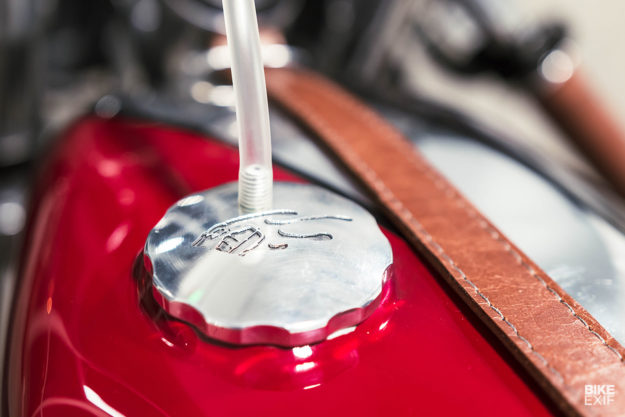
Mark sourced the Alpina locally, then set about solving his first problem: the engine was completely locked up. “I took it apart and thought: ‘these vertically split crank cases are a pain in the ass’,” he recalls.
“So I machined an o-ring groove around the main case and primary cover, so it wouldn’t leak and I wouldn’t have to take it apart again. The rest went back together as it should.” Thanks to copious amounts of elbow grease, the engine now looks brand new. Mark fitted a flat slide carb that he found in a box, adding a curved intake to help it clear the frame.
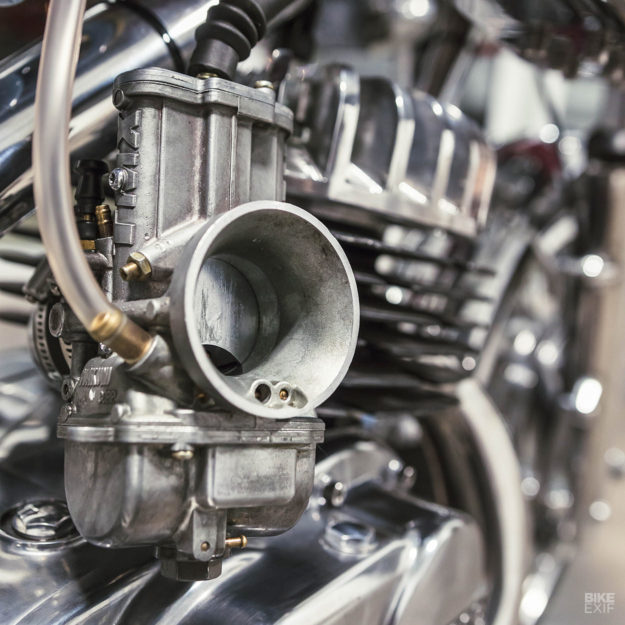
The exhaust is a “stainless sheet menagerie,” with some guesswork to get the port timing right. “It seems to work OK,” he says. (Why are we not surprised?) “There is something that is uniquely Spanish about Bultacos, and I am sure the other brands from this area and era too.
“I love the work that went into them.”
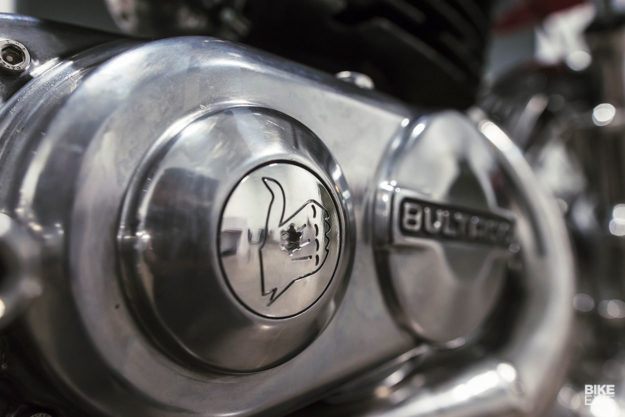
“Bultacos get a bad rap for sometimes questionable quality—but I don’t see it. They are beautifully made, even if seen through the eyes of a non-CNC, crafted-as-you-go lens. They won many world championships in a bunch of different motorcycle racing genres, so they did a lot right.”
The tubed aluminum frame is all Mark’s handiwork, following a design he’s been sitting on for a few years. It includes a machined rear engine mount that incorporates the swing arm pivot, and ties into the upper main frame tube.
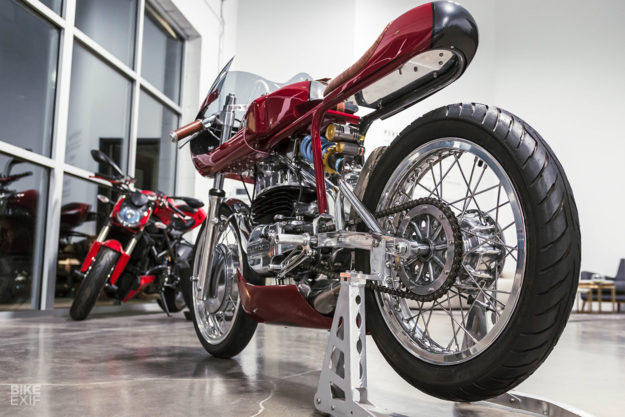
Two machined legs, connected by bent round tubes, form the swing arm. It’s hooked up to a new rear shock from Gears Racing.
A set of unspecified Suzuki forks do duty up front. Mark tells us that the head angle is set up pretty steep, with not much trail. “But it handles okay. It’s skittish, but at a couple hundred pounds it would be, no matter what.”
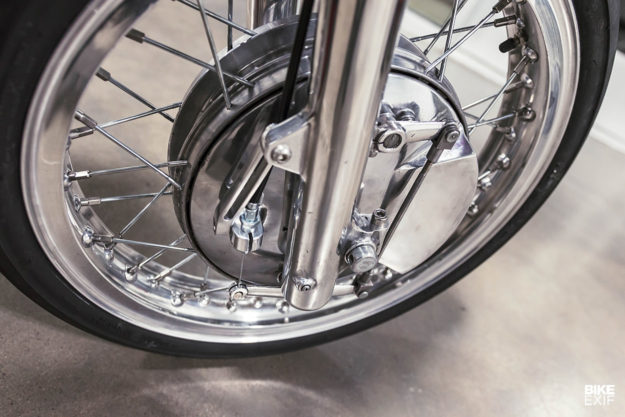
The wheels are a mixed bag. Mark sourced a Moto Guzzi Eldorado front wheel, then spooned on an old Goodyear race slick from his land speed bike. The Guzzi’s drum brake stayed in place, but apparently it has the effectiveness of a wood block. “I machined about ten pounds out it,” says Mark, “but it didn’t help much.”
Other than the motor, the rear hub’s the only piece of the original Bultaco Alpina left. It’s now laced to a raised lip Borrani rim via a set of Buchanan’s stainless spokes. The Avon Roadrider it’s wearing was dug out of a stack of random tires that Mark has amassed.
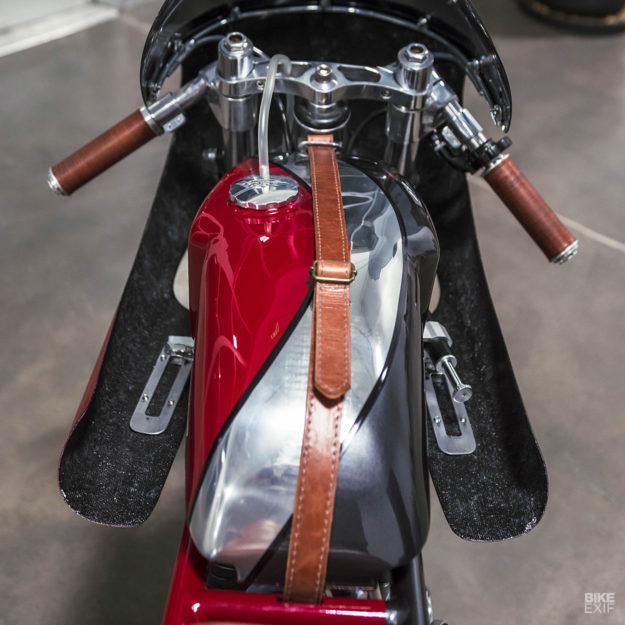
Moving to the bodywork, Mark fashioned a new tank from aluminum, with the angles and rear cutouts being a nod to the TSS road racers of old. He dismisses the rest of the bodywork as simply ‘bought,’ but a close look reveals some lovely touches in between everything—like the elegant fairing bracketry.
Everything’s finished in a lustrous black and red finish, split by a polished section. Mark did the paint in a DIY paint booth in the corner of the shop. The seat’s covered in the same hide as his ‘Alpha’ BMW build, and it’s been done by the same guy—Eli Scarbeary.
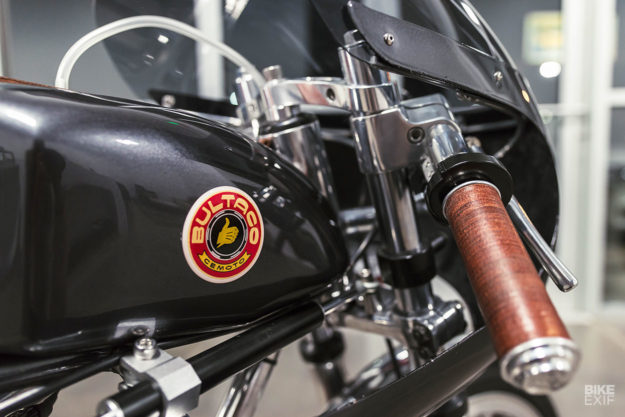
The leather grips are Mark’s own creation, as are the clip-ons they’re mounted to. “I designed ones that use one bolt to pinch the fork tube and bar,” he says. “And I machined them at 25 degree angle—like Jarno Saarinen used in his glorious heyday.”
There’s probably a ton of detail we’re missing, but the overall package has us hooked regardless. Mark’s Alpina looks tight, perfectly balanced and well judged from any angle. It’s a sign of a builder at the top of his game—but Mark’s nowhere near done learning, or experimenting.
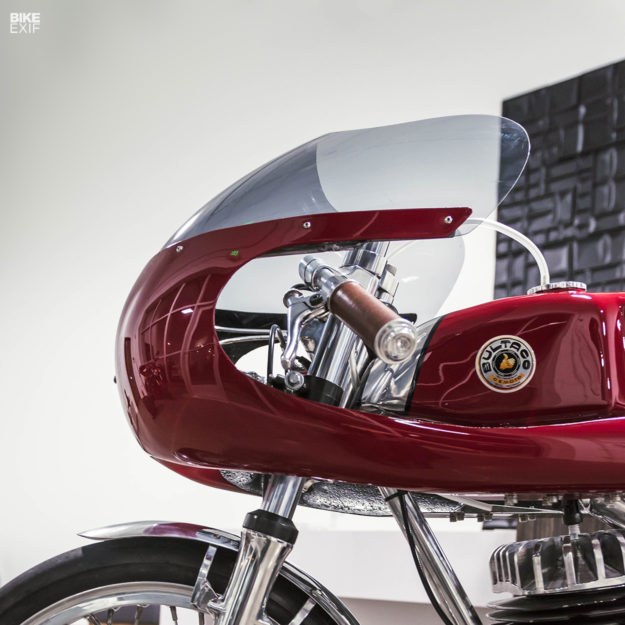
“The Bultaco came out nice—I learned a lot,” he says, with typical modesty. “But I had to Loctite everything, and even then it shakes it apart!”
“I only build bikes because they interest me and challenge me to learn new skills. I am working next on an all-carbon fiber electric motorcycle with crazy steering, and then I think I will build an airplane.”
“After thirty years of building stuff I am excited every day for the next interesting thing. I may run out of time before I build all the things in my head!”
Speed of Cheese Racing | Instagram | Images by Zoe Kuball

Mark would like to thank David Tagg at Wrights Motorcycles for the wheel help, Misa Macias and Jhony Mendoza for paint correction, and all the massive talent at Luxe Auto Spa.